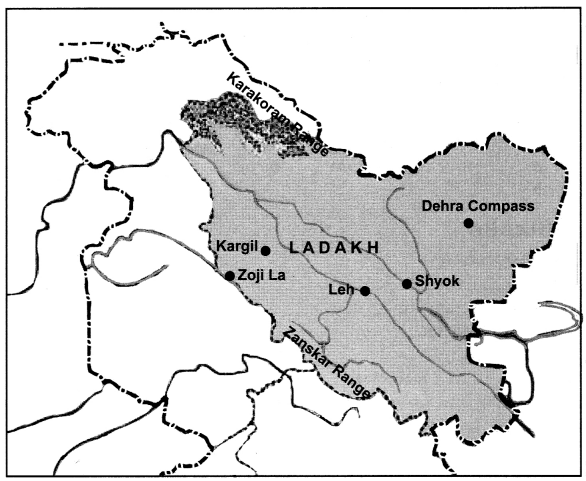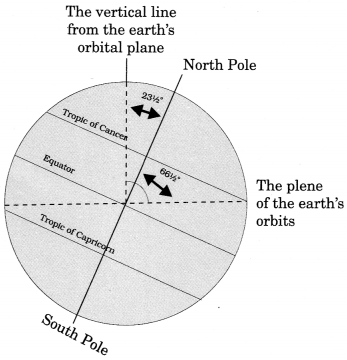MCQ Questions for Class 7 Geography Chapter 10 Life in the Deserts with Answers
Students who are searching for NCERT MCQ Questions for Class 7 Geography Chapter 10 Life in the Deserts with Answers Pdf free download are compiled here to get good practice on all fundamentals. Know your preparation level on MCQ Questions for Class 7 Social Science with Answers. You can also verify your answers from our provided Life in the Deserts Class 7 MCQs Questions with Answers. So, ace up your preparation with MCQ of Chapter 10 Geography Objective Questions.
Life in the Deserts Class 7 MCQs Questions with Answers
Appearing Students of Class 7 Exams can download MCQ on Life in the Deserts Class 7 with Answers from here. By practicing Class 7 Geography Chapter 10 MCQ with Answers, you can score well in the exam. Download Class 7 SST Geography Chapter 10 MCQ in PDF format from the below access links and start practicing on a regular basis for better subject knowledge.
Question 1.
Which of the following mineral is not found in the Sahara desert among the following?
(a) Gold
(b) Phosphate
(c) Manganese
Answer
Answer: (a) Gold
Question 2.
Which of the following country is not touched by the Sahara desert?
(a) Egypt
(b) Libya
(c) Saudi Arabia
Answer
Answer: (c) Saudi Arabia
Question 3.
Ladakh is located in the:
(а) Western side of the Jammu and Kashmir
(b) Eastern side of the Jammu and Kashmir
(c) Northern side of Jammu and Kashmir
Answer
Answer: (b) Eastern side of the Jammu and Kashmir
Question 4.
An animal found in Sahara is:
(a) Jackal
(b) Ostrich
(c) Lion
Answer
Answer: (a) Jackal
Question 5.
The altitude in Ladakh varies from 3000 m in Kargil to more than ………….. m in Karakoram.
(a) 7,000
(b) 8,000
(c) 9,000
Answer
Answer: (b) 8,000
Question 6.
Sahara desert touches how many countries?
(a) 12
(b) 11
(c) 9
Answer
Answer: (b) 11
Question 7.
The world’s largest desert is:
(a) Sahara
(b) Thar
(c) Ladakh
Answer
Answer: (a) Sahara
Question 8.
One animal whose hair is not used to make woollen clothes is:
(a) Sheep
(b) Goat
(c) Lion
Answer
Answer: (c) Lion
Question 9.
The cold desert is:
(a) Ladakh
(b) Sahara
(c) Thar
Answer
Answer: (a) Ladakh
Question 10.
Nile valley is located in:
(a) Egypt
(b) Ghana
(c) Mali
Answer
Answer: (a) Egypt
Question 11.
What is another name of Khapa-chan?
(a) Sahara
(b) Ladakh
(c) Egypt
(d) None of these
Answer
Answer: (b) Ladakh
Ladakh is also known as Khapa-chan that means snow lan(d)
Question 12.
Where is Drass located?
(a) In Ladakh
(b) In Sahara
(c) In Egypt
(d) None of these
Answer
Answer: (a) In Ladakh
Drass one of the coldest inhabited places on earth is located in Ladakh.
Question 13.
What do you mean by the Gangri?
(a) River
(b) Glacier
(c) Pond
(d) Waterfall
Answer
Answer: (b) Glacier
The rivers form deep valleys and gorges. Several glaciers are found in Ladakh, for example the Gangri glacier.
Question 14.
How many countries touch Sahara desert?
(a) 11
(b) 12
(c) 20
(d) 17
Answer
Answer: (a) 11
The Sahara desert touches eleven countries. These are Algeria, Chad, Egypt, Libya, Mali, Mauritania, Morocco, Niger, Sudan, Tunisia and Western Sahar(a)
Question 15.
Sahara is located in which part of Africa?
(a) Eastern
(b) Northern
(c) Western
(d) Southern
Answer
Answer: (b) Northern
Sahara desert covering a large part of North Afric(a) It is the world’s largest desert. It has an area of around 8.54 million sq. k m.
Question 16.
Where is the highest temperature recorded?
(a) 67.7°C
(b) 47.7°C
(c) 57.7°C
(d) 37.7°C
Answer
Answer: (c) 57.7°C
Al Azizia in the Sahara desert, south of Tripoli, Libya recorded the highest temperature of 57.7°C in 1922.
Question 17.
What is the climatic conditions of desert?
(a) Low rainfall
(b) Scanty vegetation
(c) Extreme temperature
(d) All of the above
Answer
Answer: (d) All of the above
Climatic conditions of desert are low rainfall, scanty vegetation and extreme temperatures.
Question 18.
What are the types of deserts found in the world?
(a) Cold
(b) Hot
(c) Both a and b
(d) None of these
Answer
Answer: (c) Both a and b
The two types of the deserts found in the world are the cold deserts and the hot deserts.
Question 19.
Egypt is famous for growing what?
(a) Wheat
(b) Maize
(c) Cotton
(d) All of these
Answer
Answer: (c) Cotton
Egyptian cotton is famous worldwide is grown in Egypt. Crops such as rice, wheat, barley and beans are also grown.
Question 20.
What are the mainly inhabited of the Ladakh desert?
(a) Christians and Muslims
(b) Buddhists and Muslims
(c) Christians and Buddhists
(d) None of these
Answer
Answer: (b) Buddhists and Muslims
The mainly inhabited of the Ladakh desert were Buddhists and Muslims.
Match the following
1.
| Column I | Column II |
| 1. Sahara desert | (a) Africa |
| 2. Lion | (b) Egypt |
| 3. Nile valley | (c) Willow trees |
| 4. Cricket bats | (d) Shahtoosh |
| 5. Tibetan antelope | (e) Ladakh |
Answer
Answer:
| Column I | Column II |
| 1. Sahara desert | (a) Africa |
| 2. Lion | (e) Ladakh |
| 3. Nile valley | (b) Egypt |
| 4. Cricket bats | (c) Willow trees |
| 5. Tibetan antelope | (d) Shahtoosh |
Fill in the blanks
1. Cactus is found in ……………. desert.
Answer
Answer: Sahara
2. Gravel plains are found in ……………. .
Answer
Answer: Sahara
3. ……………. is the capital of Ladakh.
Answer
Answer: Leh
4. Khapa-chan means ……………. .
Answer
Answer: snow land
5. Lamayuru is a famous ……………. monastery.
Answer
Answer: Buddhist
6. People get water from the ……………. in the Sahara desert.
Answer
Answer: oasis
7. Drass is located in ……………. .
Answer
Answer: Ladakh
8. The finest cricket bat is made from the wood of the ……………. trees.
Answer
Answer: willow
9. The night temperature in Sahara desert is nearing ……………. degrees.
Answer
Answer: zero
10. Ladakh desert lies in the rain shadow of the ……………. .
Answer
Answer: Himalayas
11. Vegetation is ……………. in Ladakh desert.
Answer
Answer: scanty
12. The countries associated with oil are ……………., ……………. and ……………. .
Answer
Answer: Algeria, Libya and Egypt
13. The Sahara desert experience ……………. and ……………. climate.
Answer
Answer: scorching hot and parch dry
14. Depressions are formed when the ……………. blows away the san(d)
Answer
Answer: wind
15. Tafilalet oasis in morocco is a large oasis with an area of about ……………. sq km.
Answer
Answer: 13,000
Picture Based Questions
1. On an outline map of India, show Ladakh desert.
Answer
Answer:

Use the above-provided NCERT MCQ Questions for Class 7 Geography Chapter 10 Life in the Deserts with Answers Pdf free download and get a good grip on the fundamentals of real numbers topic. Need any support from our end during the preparation of Life in the Deserts Class 7 MCQs Multiple Choice Questions with Answers then leave your comments below. We’ll revert back to you soon.
MCQ Questions for Class 7 Geography Chapter 10 Life in the Deserts with Answers Read More »





